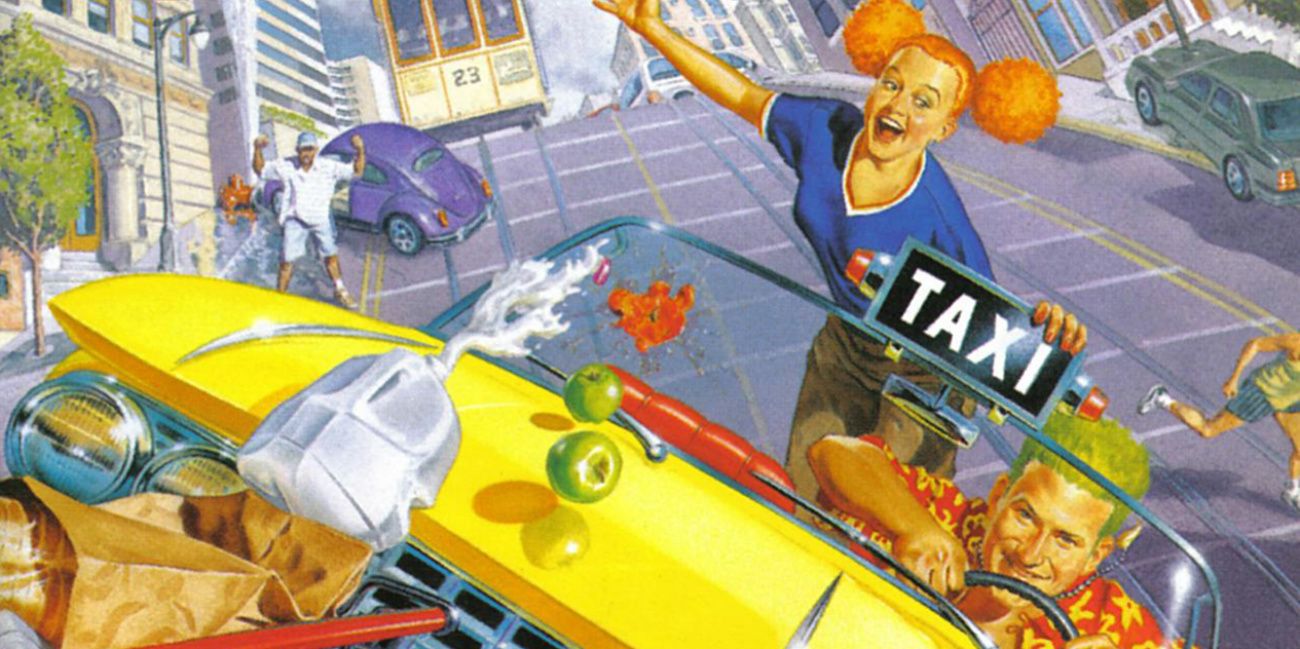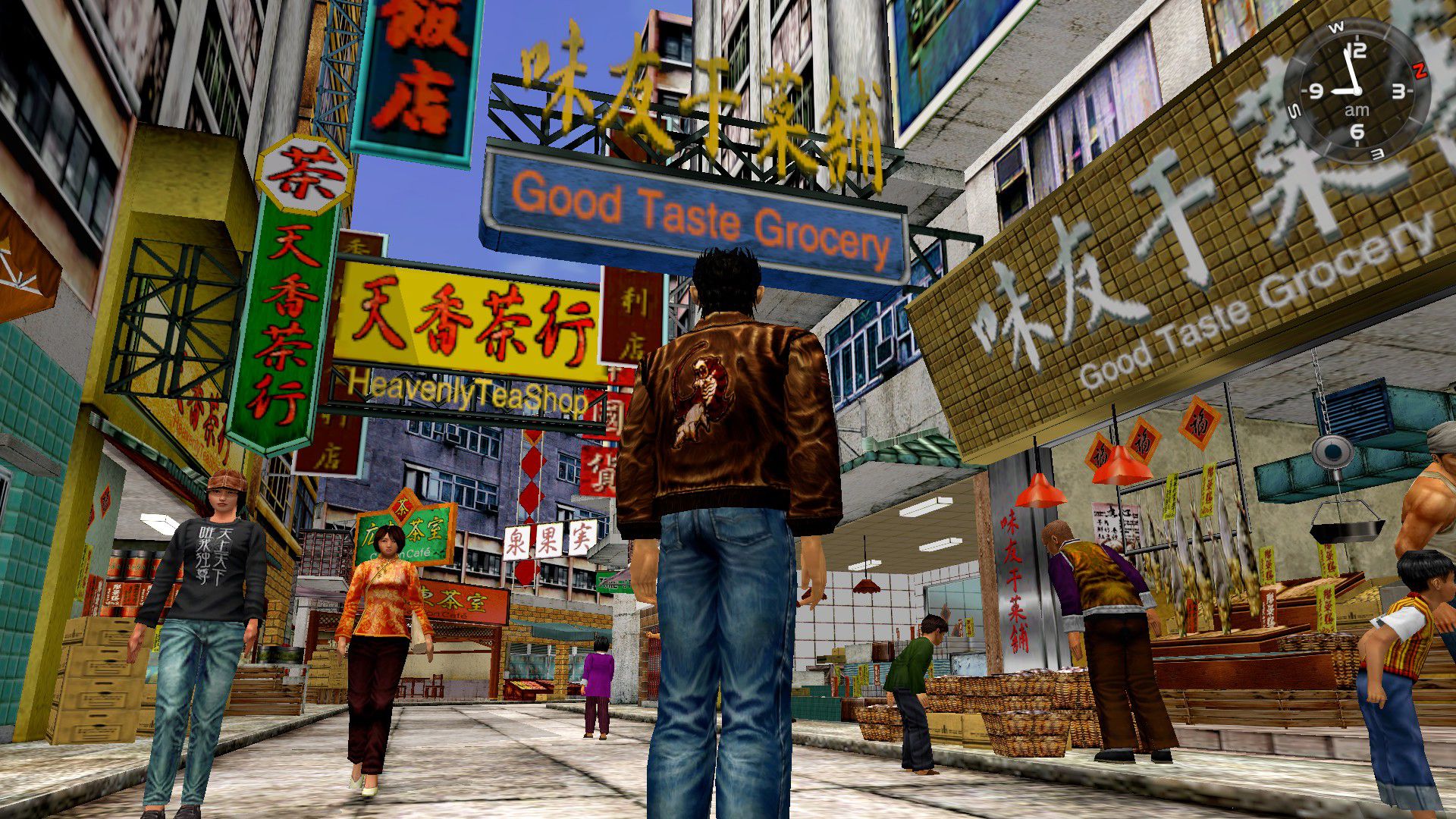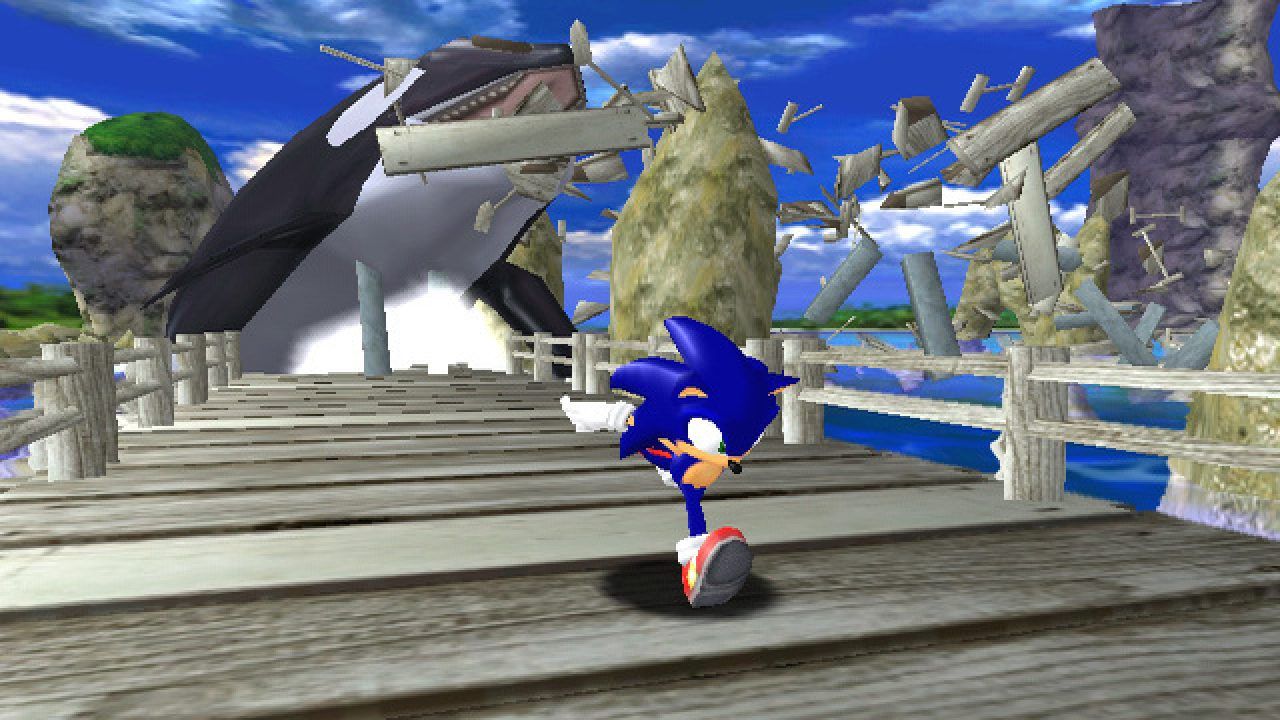Now reaching the 20th anniversary of its original release, the Sega Dreamcast is a video game console still sorely missed by many. Seen as both ahead of its time and killed too early, the system was Sega's last console before it transitioned to a software developer and publisher. To commemorate this still fondly remembered console, let's look back at what made it so great, as well as the circumstances that led to its downfall.
The Sega Dreamcast boasted a library of great games, many of which were killer apps for the system. One of its most hyped titles was Sonic Adventure. The 1998 platformer was the first truly 3D title in Sega's hallmark Sonic the Hedgehog series. Other popular first party titles included Crazy Taxi, Typing of the Dead, Space Channel 5 and the graffiti-punk action game Jet Set Radio.
These games made the console a welcome home for offbeat, quirky titles unseen anywhere else. This paved the way for future console titles like Katamari Damaci, Viewtiful Joe and Sunset Overdrive. Perhaps the console's most ambitious title, however, was Shenmue. Yu Suzuki's groundbreaking narrative adventure was, for its time, the most expensive game ever produced. Its cinematic and open world gameplay foreshadowed how important such features would become, and remain still, in the medium.
Non-Sega published hits include Resident Evil: Code Veronica, Quake 3: Arena and Cannon Spike. Sports titles were becoming increasingly popular, and the Dreamcast saw almost all of the staples. The console received a bevy of fighting games, including Power Stone, Soulcalibur and Marvel vs. Capcom 2. Along with having the best ports of arcade fighters, it also hosted the only console version of Street Fighter III: New Generation and 2nd Impact until 2018. With Nintendo shrinking in dominance and relevance, Sega was the go-to stalwart for releasing games.
The Dreamcast was the first console with built-in online support. While a niche feature then, the impact on gaming today is immeasurable. Online play is a requirement of today's multiplayer gaming. This feature shone most brightly in titles such as the aforementioned Quake 3 and especially Phantasy Star Online. The latter game pioneered online RPGs, which at the time were mostly relegated to computers. The game became such a cult hit that dedicated fans still run private servers for it to this day.
Other exciting add-ons included the fishing rod motion controller. Intended for use with Sega Bass Fishing, it could also work with Soulcalibur. This is considered by many as a predecessor to the motion controls of the Nintendo Wii. The console could also connect to the third-party handheld SNK's Neo Geo Pocket. Other peripherals included the Dreameye video camera. These both preceded Nintendo's Gamecube-Gameboy Advance link cable and Sony's EyeToy. So, with these great games and features going for it, how did this impressive console fail?
As former rival Nintendo would later learn, healthy third-party support is vital for a modern gaming console. Despite having other sports titles, the Dreamcast lacked the increasingly popular Madden due to a disagreement with EA Sports. Similarly, Square Enix (then Squaresoft) had shunned Nintendo and Sega in favor of newcomer Sony.
This couldn't have come at a worse time for the two, as the newest entries in the Final Fantasy series were the most popular yet. Many of the other now-classic JRPGs made in the wake of Final Fantasy VII were also for the PlayStation. Other developers claimed that the Dreamcast was difficult to make games for due to proprietary technology. This again led them to seek out Sony as the home for their games, be it the PlayStation or the upcoming PlayStation 2.
The Dreamcast's install base was much lower than previous Sega consoles. This was due to the company's poor decisions with hardware, namely in the West. Sega had released numerous expensive add-ons and consoles they failed to support. These included the Game Gear, 32X, Sega CD and especially the Saturn. The Saturn was an expensive system with a rushed launch and few games from either Sega or third parties. The lack of a new Sonic game was a particularly sore point for the Saturn.
The 32-bit hardware was also behind the soon to release Nintendo 64 and PlayStation. Due to these factors and others, the Saturn went as soon as it came. Gamers felt like the rug had been pulled from under them when the Saturn was killed to make way for the Dreamcast.
This tarnished reputation and angry fanbase meant that the Dreamcast launched to little fanfare. The bizarre "it's thinking" ad slogan did little to argue why consumers should pick it over the PlayStation. It also couldn't keep up with the upcoming PlayStation 2, Xbox or Gamecube. With sales and market space shrinking, Sega withdrew the Dreamcast and themselves from the console race. From then on, they would be strictly third party developers and publishers, even making games for former rival Nintendo.
While it may have been Sega's last console hurrah, it was anything but a bad number to go out on. Gamers look back on the Dreamcast fondly, both for its quality and how prophetic it was to gaming. Some enthusiasts even created homebrew games for the console. These include both ports of PlayStation games, as well as completely original titles.
With the current trend of retro console recreations, now is the perfect time to give the Dreamcast a second chance. Sega has already succeeded with their Sega Genesis Mini. A Dreamcast Mini, emulating the system's games and features, would allow it to be appreciated outside of console wars. Sega has stated that a Saturn Mini is doubtful. The more fondly remembered Dreamcast, however, definitely deserves another time to shine.



